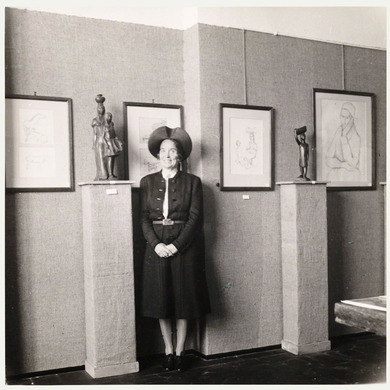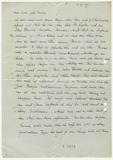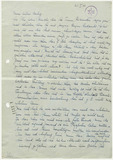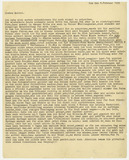Emy Roeder
Emy Roeder
Die Florentiner Jahre in der Villa Romana, Atelier an Atelier mit Emy Roeder verlebt, waren doch auch voller Ungemach, Unterdrückung und Bedrohungen. Aber welche Unbeirrbarkeit, Unbestechlichkeit und moralische Stütze in allem, was menschlich und künstlerisch unser Leben bewegte. Diese Beharrlichkeit neben mir gefühlt zu haben, geben der Erinnerung an die trübsten Tage noch einen Glanz.
[The Florentine years spent in the Villa Romana with a studio right next door to Emy Roeder’s studio were also marked by hardship, oppression and threats. But what perseverance, incorruptibility and moral support there was in everything that moved our lives humanly and artistically. To have felt this tenacity next to me still gives a shine to the memory of the saddest days. (ed. trans.)]
Hans Purrmann, 9 January 1950
| Born | on 30 January 1890 in Würzburg, Germany |
|---|---|
| Died | on 7 February 1971 in Mainz, Germany |
| Exile | Italy |
| Remigration | Federal Republic of Germany |
| Profession | Bildhauerin |
The sculptor Emy Roeder learned her craft in her hometown of Würzburg, as well as in Munich and Darmstadt. In the 1920s she successfully established herself in Berlin as an expressionist artist. In 1936 she was awarded a one-year scholarship at the Villa Romana in Florence. During her stay there the Nazi idea of “degenerate art” became dominant in Germany and in the 1937exhibition of that name in Munich, Roeder was pilloried. The denigrated artist subsequently stayed in Italy.
In her years of forced exile, Roeder drew much inspiration from the small bronzes of the Italian Renaissance. She specialized in figures of women and animals. She was even able to exhibit her sculptures, which she always created based on her drawings of nature, in Florence in 1941. Roeder found the necessary resources for the expensive process of bronze casting until late in the war years. However, the Florentine period was in general full of privation. The sculptor lived in a Spartan manner, in cottages in the summer and in the city in winter. She maintained close links to other German exiles like Hans Purrmann, the director of the Villa Romana.
In 1944, allied troops occupied Florence and Roeder was arrested as a German citizen and interned in a camp near Salerno. She used her job as a supervisor in the women's shower room for making artistic nudes. It is quite clear that Roeder’s years in exile influenced her art and must be considered in understanding her life's work. After the war, Roeder lived in Rome until 1949 and then returned to Germany, where she died in 1971.
Selected works:
Bildnis einer jungen Italienerin aus Florenz (1937)
Junge Korbträgerin (1940)
Unter der Dusche. Padula I (1946)
Drei liegende Schafe (1946/47)
Campagnische Bergziegen (1948)
Further reading:
Gerke, Friedrich: Emy Roeder. Eine Werkbiographie mit einem Gesamtkatalog der Bildwerke und Zeichnungen. Wiesbaden: Franz Steiner 1963
Lange, Justus: „Ein kleines Zentrum von Eleganz und Kultur“. Emy Roeder und Hans Purrmann in der Villa Romana in Florenz. In: Maier, Markus Josef / Specht, Stephan (Hg.): Blickwechsel. Zehn Jahre Museumsinitiative des Martin von Wagner Museums. Würzburg: Ergon 2001, S. 47 – 76.
Reese, Beate (Hg.): Auf der Suche nach Ausdruck und Form. Emy Roeder (1890 – 1971) und die Plastik ihrer Zeit. Würzburg: Museum im Kulturspeicher 2004




